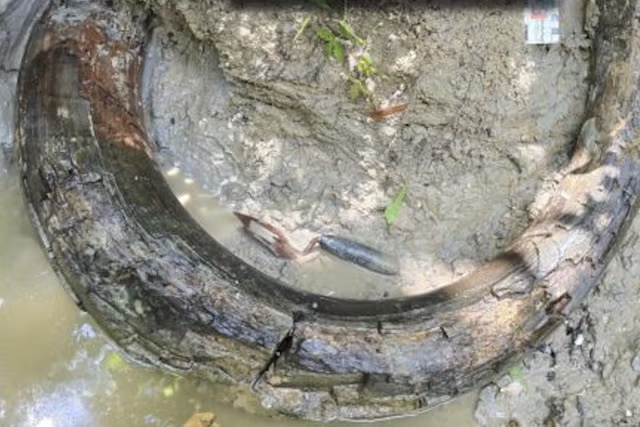In the wake of a powerful earthquake shaking Russia and subsequent volcanic eruption, the country has been hit by two more seismic events.
This magnitude 4.6 earthquake was reported in Buryatia, Russia, around 12 miles from the town of Severomuysk, while the 5.2 magnitude quake was detected 40 miles northeast of the tiny Russian island of Shikotan, just off the coast of Japan's Hokkaido.
The M4.6 occurred at about 1:20 p.m. ET on Monday, about 6 miles under the ground, while the M5.2 was recorded 64 miles deep at roughly 4:20 a.m. ET on Tuesday morning.
These quakes occurred only days after a powerful 7.0 magnitude earthquake shook the Russian city of Petropavlovsk-Kamchatsky early on Sunday, occurring about 60 miles off the country's far eastern coast. Russian news outlets reported that Petropavlovsk-Kamchatsky residents experienced some of the strongest shaking they had "in a long time," according to the Associated Press. No major damage has been reported as a result of the quake, Russian media TASS reports, but "buildings are now being examined for potential damage, with special attention paid to social facilities."
"The August 17, 2024, M7.0 earthquake east of Petropavlovsk-Kamchatsky, Russia, occurred as the result of reverse faulting at a depth of about 29 km. At the location of this earthquake, the Pacific place is moving west-northwest with respect to the North America and Eurasia plates," the USGS explained. "The earthquake's location and sense of motion is consistent with the faulting on the subduction zone plate interface."
"The Kuril-Kamchatka arc has frequent moderate-to-large earthquakes and has hosted 29 additional M 6.5+ events within 250 km of the August 17, 2024, earthquake over the preceding century. The August 17, 2024, earthquake is located roughly 40 km northeast of the 1952 M 9.0 Kamchatka earthquake, which resulted in a destructive, Pacific-wide tsunami."
Shortly after the M7.0 quake, the nearby Shiveluch volcano began erupting, spewing a large cloud of ash several miles into the sky, blanketing a nearby village in ash. The plume briefly triggered a "code red" warning for aircraft, and TASS reported separately that no commercial flights had been disrupted, with no damage to aviation infrastructure having been caused.
In the day after the M7.0 quake, over 30 aftershocks were felt around the nearby region.
"We are closely monitoring the focal process, recording aftershocks—more than 30 of them were registered over the past day," the Kamchatka branch of the Geophysical Survey Service of the Russian Academy of Sciences said in a statement, TASS reports. "This is a standard scenario and we can expect now a number of earthquakes reaching 6.5 magnitude."
"At the same time, an intense aftershock process can last for up to a month and then it will subside and become less intense," they said.
The higher the magnitude, the more energy is released, increasing the potential for widespread destruction and loss of life. However, local conditions and preparedness also play crucial roles in determining the severity of an earthquake's impact: Even lower-magnitude earthquakes can be deadly if they strike densely populated areas with poorly constructed buildings.
Magnitude 4.0-4.9 earthquakes are considered "moderate," and may cause noticeable shaking, resulting in minor structural damage, like cracks in walls or windows breaking. "Strong" earthquakes (magnitude 5.0 to 5.9) may cause damage to buildings, especially older structures not designed for seismic activity.
Magnitudes 6.0 through 6.9 are "major" earthquakes, and can cause significant damage in populated areas, including structural damage to buildings, bridges, and roads, while magnitudes 7.0 to 7.9 are "severe" earthquakes that can result in widespread destruction, especially in urban areas, as buildings and infrastructure may collapse.
Do you have a tip on a science story that Newsweek should be covering? Do you have a question about earthquakes? Let us know via science@newsweek.com.
Disclaimer: The copyright of this article belongs to the original author. Reposting this article is solely for the purpose of information dissemination and does not constitute any investment advice. If there is any infringement, please contact us immediately. We will make corrections or deletions as necessary. Thank you.



